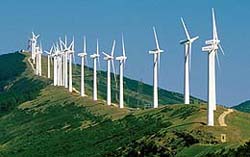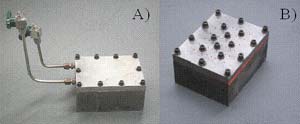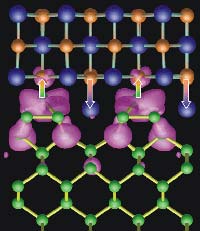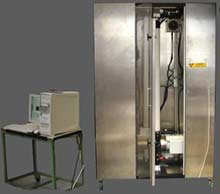Power and Electrical Engineering
This topic covers issues related to energy generation, conversion, transportation and consumption and how the industry is addressing the challenge of energy efficiency in general.
innovations-report provides in-depth and informative reports and articles on subjects ranging from wind energy, fuel cell technology, solar energy, geothermal energy, petroleum, gas, nuclear engineering, alternative energy and energy efficiency to fusion, hydrogen and superconductor technologies.

Australian Windpower goes global
Australian windpower technology is reaching out to a global market, as science, technology and industry come together in a new wind energy consulting company based in Canberra.
Former CSIRO scientists, Dr Keith Ayotte and Dr Nathan Steggel developed what is seen to be world’s best available wind resource technology, WindScape and Raptor NL.
Windscape is believed to be the leading wind mapping tool and enables power prospectors to find the windiest spots down to property boundaries

Tufts researchers find new cost-effective catalyst for hydrogen production for fuel cells
Discovery could ignite ‘engine of the future’ — Eliminating millions of dollars on use of precious metals
Researchers at Tufts University have discovered that it’s possible to make hydrogen from fossil fuels using far less platinum or gold than current fuel processing technology has required. Their research shows that 90 percent of precious metals used today may be removed from the catalyst without affecting its ability to produce hydrogen.
This finding could have potential

New catalyst paves way for cheap, renewable hydrogen
Scientists have developed a hydrogen-making catalyst that uses cheaper materials and yields fewer contaminants than do current processes, while extracting the element from common renewable plant sources. Further, the new catalyst lies at the heart of a chemical process the authors say is a significant advance in producing alternate fuels from domestic sources.
In the June 27 issue of the journal Science, James Dumesic, John Shabaker and George Huber, of the University of Wisconsin at Madis

Fuel cells agreement: EU and US forge links to provide sustainable energy sources for the future
In the transition to a hydrogen economy, fuel cells could provide the planet with a sustainable energy supply to replace rapidly diminishing fossil fuels. Turning this vision into a reality took a further step forward today with the signing of a EU-US co-operation agreement on fuel cells technology. The agreement brokered by European Research Commissioner Philippe Busquin and the US Secretary or Energy, Mr. Spencer Abraham, aims to strengthen research links, by bringing together EU and US researchers

Breakthrough “Interface Tuning” is Macro Step for Microelectronics
The ability to make atomic-level changes in the functional components of semiconductor switches, demonstrated by a team of Oak Ridge National Laboratory, North Carolina State University and University of Tennessee physicists, could lead to huge changes in the semiconductor industry. The results are reported in the June 13 issue of Science.
Semiconductor devices, the building blocks of computing chips that control everything from coffee makers to Mars landings, depend on microscopic solid-sta

Portable CT Scanner Joins Hunt for Alternative Energy
Lawrence Berkeley National Laboratory (Berkeley Lab) scientists have developed the world’s first x-ray computed tomography (CT) scanner capable of examining entire core samples at remote drilling sites. The portable device, which employs the same high-resolution imaging technology used to diagnose diseases, could help researchers determine how to best extract the vast quantities of natural gas hidden under the world’s oceans and permafrost.
The scanner images the distribution of gas hydrate